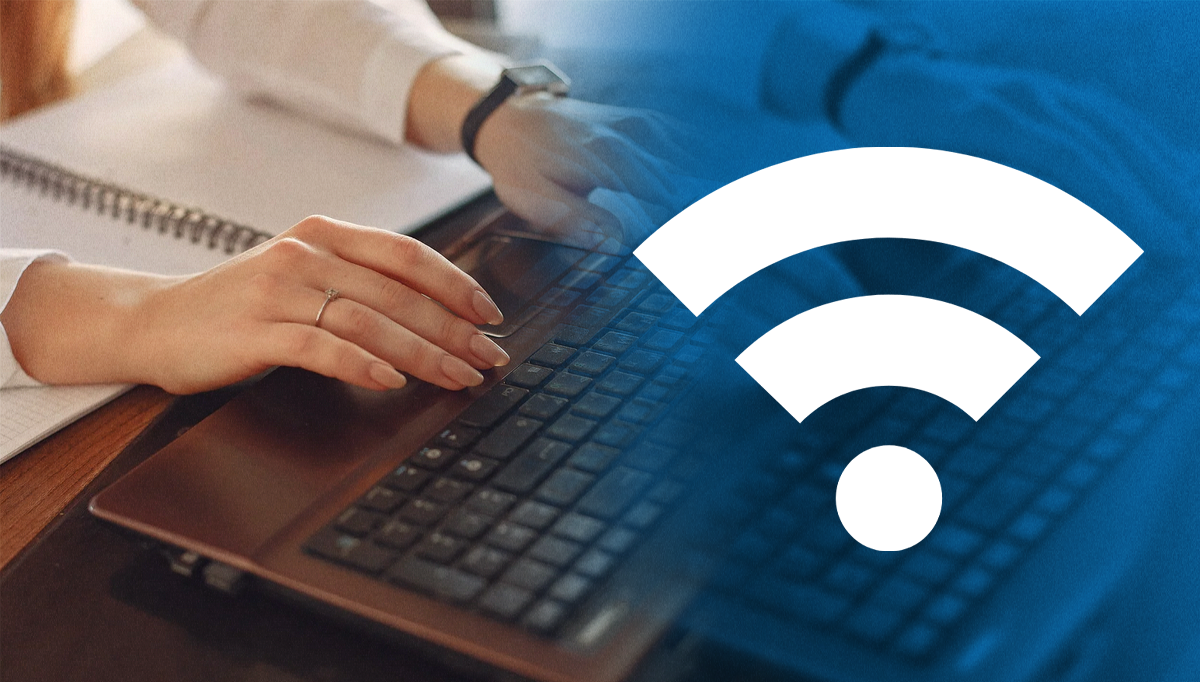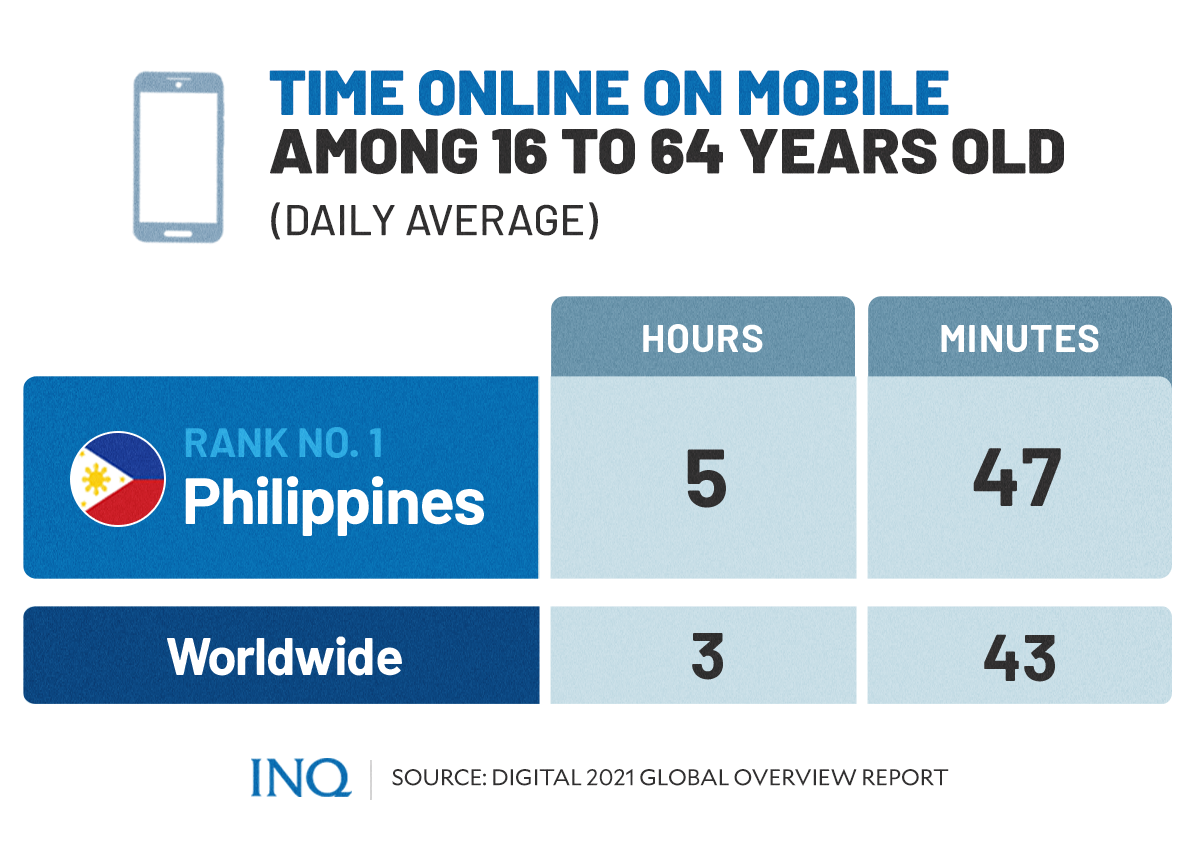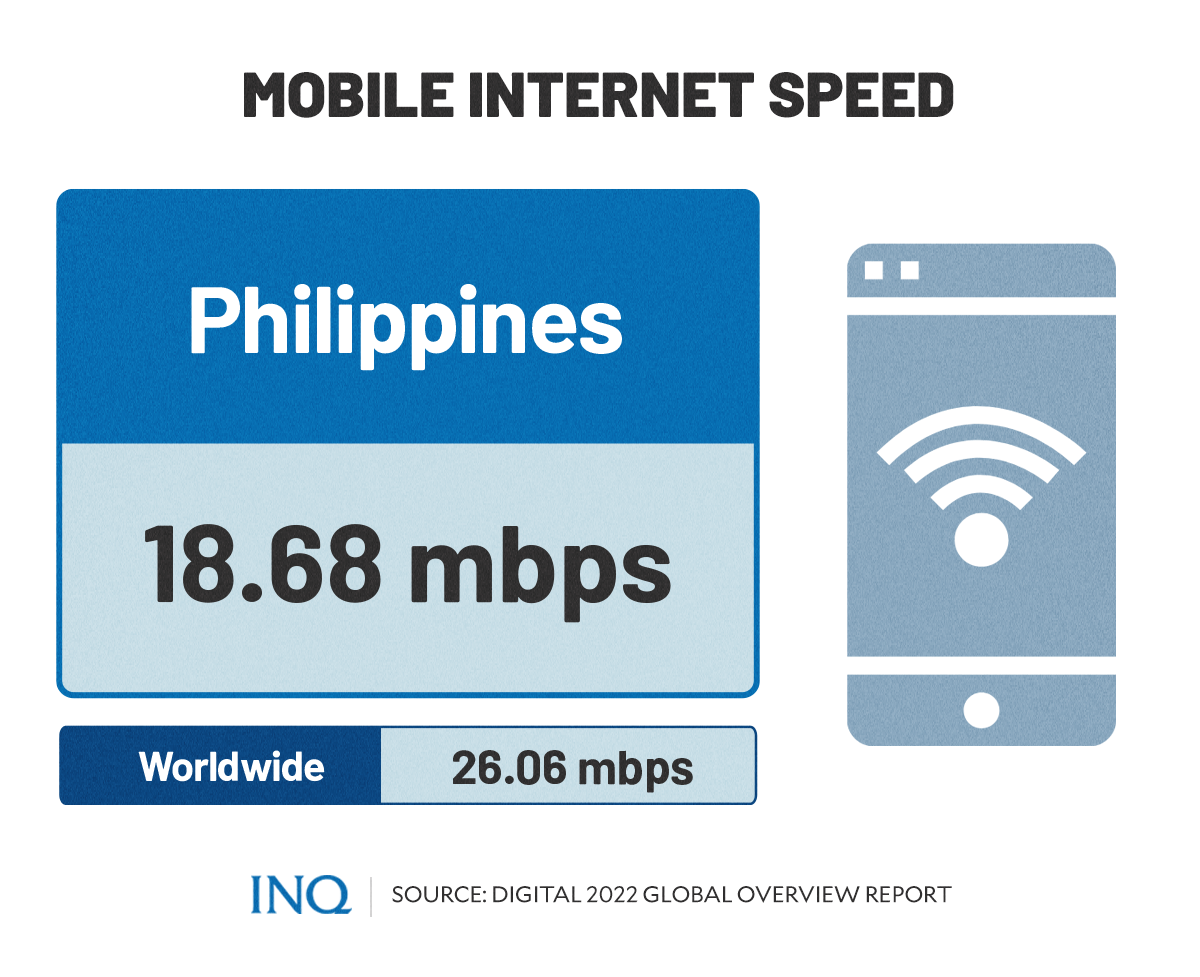Social media, internet craze keep PH on top 2 of world list
MANILA, Philippines—Filipinos have once again proven that they can spend long hours each day online—whether it’s for work, education, entertainment, social media, or all of these—as the Philippines ranked second on the list of countries whose citizens spend the most time on the internet and social media.
According to the latest Digital 2022 report of social media management firm Hootsuite and creative agency We Are Social, on average, internet users aged 16 to 64 scattered across the globe spent an average of 6 hours and 58 minutes using the internet each day on any device.
Meanwhile, internet users in the Philippines in the same age range spent an average of 10 hours and 27 minutes connected to the internet each day within the last 12 months.
The figure was lower compared to data from the Digital 2021 report, which found that Filipinos spent an average of 10 hours and 56 minutes connected to the internet, making the Philippines the top country that has the most active internet users worldwide.
READ: Filipinos remain most active internet, social media users globally — study
For this year’s report, South Africa outranked the Philippines after its citizens were found to have spent an average of 10 hours and 46 minutes using the internet.
Filipinos who preferred to spend time using the internet through mobile devices spent an average of 5 hours and 47 minutes—longer than the average of 3 hours and 43 minutes spent by internet users globally who surf the web using mobile devices.
Compared to those who connected to the virtual world through mobile devices, Filipinos who surfed the internet using computer spent less time—an average of 4 hours and 40 minutes. Still, it was longer than the average 3 hours 14 minutes spent online by computer users globally.
Connection speed in PH
Filipinos spent more than the average time spent using the internet despite having much slower internet connectivity compared to other territories.
The Digital 2022 report found that the median download speed for mobile internet connection worldwide was 26.06 Mbps, while in the Philippines, the median mobile internet speed was 18.68 Mbps.
Globally, the median download speed for fixed internet connection was 58 Mbps. The speed of fixed internet connection speed in the Philippines was likewise slower at 46.44 Mbps.
In February, data based on Ookla Speedtest’s Global Index showed that internet speeds in both broadband and mobile data in the Philippines have decreased—from 50.26 Mbps in December 2021 to 49.52 Mbps in January 2022 for fixed broadbands and from 19.20 Mbps in December to 17.95 Mbps in January.
The National Telecommunications Commission (NTC) attributed the decrease in internet speeds to the damage brought by Typhoon Odette (international name Rai).
“Ookla Speedtest Global Index report showed slight decreases in both fixed broadband and mobile median download speeds for the Philippines in January 2022,” NTC said in a statement.
“Decreases in speeds are primarily due to the devastation brought by Typhoon Odette which barreled through twenty-two provinces in the Visayas and Mindanao on 16 and 17 December 2021,” it added.
READ: PH internet speeds down in Speedtest; decrease due to Typhoon Odette’s damage
What to do online?
What do Filipinos do when using the internet?
According to the Digital 2022 report, Filipinos aged 16 to 64 spent an average of 4 hours and 6 minutes using social media each day within the past 12 months. The Philippines was the second most active country on social media.
Internet users across the globe spent an average of 2 hours and 27 minutes using social media within the same time period.
The report also saw that 51.4 percent of internet users in the Philippines follow influencers on social media.
Among the countries included on the list, the Philippines had the highest proportion of internet users who follow influencers on social media. Worldwide, at least 22.6 percent of internet users do the same.
Some Filipinos, meanwhile, use social media for work-related activities. Data showed that 36.7 percent of internet users in the country use social media for work-related network or research.
Filipino internet users were also found to enjoy doing other activities while using the internet, such as:
- Watching online videos as source of learning: 70.6 percent of Filipino internet users aged 16 to 64 watch how-to videos, tutorial videos, or educational videos each week.
- Streaming TV content via the internet: 98.3 percent of internet users in the Philippines watch TV content via streaming services each month.
- Listening to podcasts: At least 21.9 percent in the Philippines listen to podcasts each week.
- Playing video games: 96.4 percent of Filipino internet users play online video games on any device.
Some use the internet for cryptocurrency. The report stated that 19.4 percent of the internet users in the Philippines own some form of cryptocurrency.
Others, including 27.9 percent of internet users in the Philippines, use online banking, investment, or insurance applications each week.
Amid the COVID-19 pandemic, more internet users in the country also used the internet to answer some concerns regarding their health. Around 34.4 percent of Filipino internet users were found to search for health symptoms online each week.
Low concerns on security
The US Federal Bureau of Investigation’s Internet Crime Report 2021 released last month found that an unprecedented increase in cases of cyber attacks and malicious activity online has been recorded as more people across the globe connect to the virtual world.
The FBI’s Internet Crime Complaint Center (IC3) found that cybercrime reports and complaints gathered across the world, but mainly from the US, had brought losses exceeding an estimated P360B ($6.9B).
In terms of financial losses suffered and reported by victims, the FBI IC3 identified business email compromise (BEC) and personal email account compromise (EAC) as the costliest types of cybercrime reported last year across the globe with estimated losses of up to P124,709,369,056 ($2,395,953,296).
It was followed by investment scams and confidence or romance fraud as the second and third costliest types of cybercrime globally.
Despite these harrowing figures, data from the Digital 2022 report found that only 34.8 percent of internet users in the Philippines expressed concerns about how companies use their personal data online.
At least 38.8 percent of internet users worldwide said they are worried about how their personal data are used by companies while using the internet.
Based on FBI IC3’s data, the Philippines was among the top 20 countries with the most cybercrime victims, or individual complaints, submitted to the IC3 last year with 1,051 victims.





